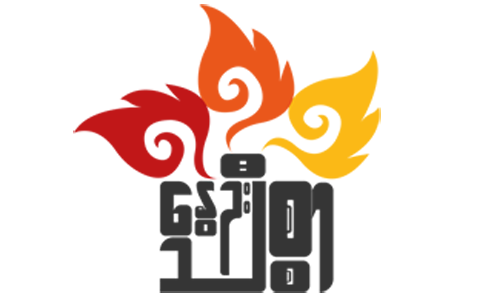MoeMaKa, March 14 2023
To accurately identify the perpetrators of the massacre in Namneng Village and prevent it from happening again

The incident in which at least 21 civilians, including 3 monks and a woman, were shot dead in a monastery in Namneng Village in Pinlaung Township, Pa’O Autonomous Region in Shan State, is news that is suddenly surprising enough to stop and read among the daily reports of killings, deaths, arrests and torture related to the civil war. Relating to this incident, questions have arisen as to what happened, which group was responsible, and how to prevent such incidents from happening again.
According to the information we have so far and some organizations’ statements and news photos, it can be said that the number of dead is at least 19 and at most 24. It can be concluded that the shooting was done with the exterior of the monastery’s brick building in the background. Dozens of bullet holes were found on the wall of the monastery, so the victims were likely shot as they came out or were forced to stand in a line and were shot dead.
The incident may have happened in the early morning or after dawn on March 11. The photos, which appeared on the military’s propaganda Telegram account, included some that were taken after 8:00 a.m. on March 11, according to the phone’s date and time, and were believed to have been taken minutes or hours after the incident.
In some of the photographs posted on the junta’s propaganda Telegram account, the victims are not seen with any weapons, but in some of the photographs published on similar Telegram accounts, the victims are seen with weapons such as Tuu Mee rifles and carbines on their bodies. Some of the photos taken after the fight show that the guns were not in the hands of the victims or were dropped out of their hands, but rather it is assumed that photos were taken after the guns were placed on dead bodies. If it were armed members who were killed in a battle, it would not be the case that many people were gathered in one place, but that they would be hit and killed in various places. But, in the photos, more than a dozen of the dead were laid close together, so it can be concluded that the unarmed people were forced to gather and shoot instead of armed resistance. The victims were seen wearing plain civilian shirts, without uniforms, belts for bullets and knives, backpacks, or other accessories worn by armed members. Based on this information, we can conclude that the victims were not members of the armed forces. It’s possible that after the shooting and killing, the scene was staged to look like the victims were members of the armed forces or guerrilla forces, and the pictures were taken for news purposes.
Some of the local defense forces have announced that they are investigating the incident, and the military council is also making propaganda statements.
The bullet casings, bullet boxes, and ammunition components used by the military council may be seen in the photos and videos issued by the PNDF Kham Koung group of the Pa’O National Defense Force.
Regarding this incident, the Pa-O National Liberation Organization, abbreviated as PNLO, said in a statement that the organization that committed the killing must take full responsibility and strongly condemned activities that incite hatred among people of different races and religions.
This area is an area inhabited by the Pa’O ethnic group, and under a situation where there is fighting between the military council troops and the Karenni People’s Defense Force (KNDF), the military council troops killed the civilians who were sheltering in the monastery of Namneng Village.
Since the night of the incident and the next morning, the junta’s propaganda telegram channels have said that this killing was carried out by the military council troops. PDFs of resistance from the monastery are depicted, and it is also written that the military council troops had to shoot with a sniper unit. After the news about this killing spread widely, the spokesman of the military council, Zaw Min Tun, answered regarding this incident, saying that it is true that the military entered the village, but the killings took place after they left, and also accusing KNDF and KNPP of killings. There were no survivors who witnessed the mass killings in this incident, but the evidence of the incident left no doubt that it was committed by the military council troops. It is likely that evidence of how it was committed and which battalion ordered the shooting will emerge in the near future, and the records will be available to demand accountability.


